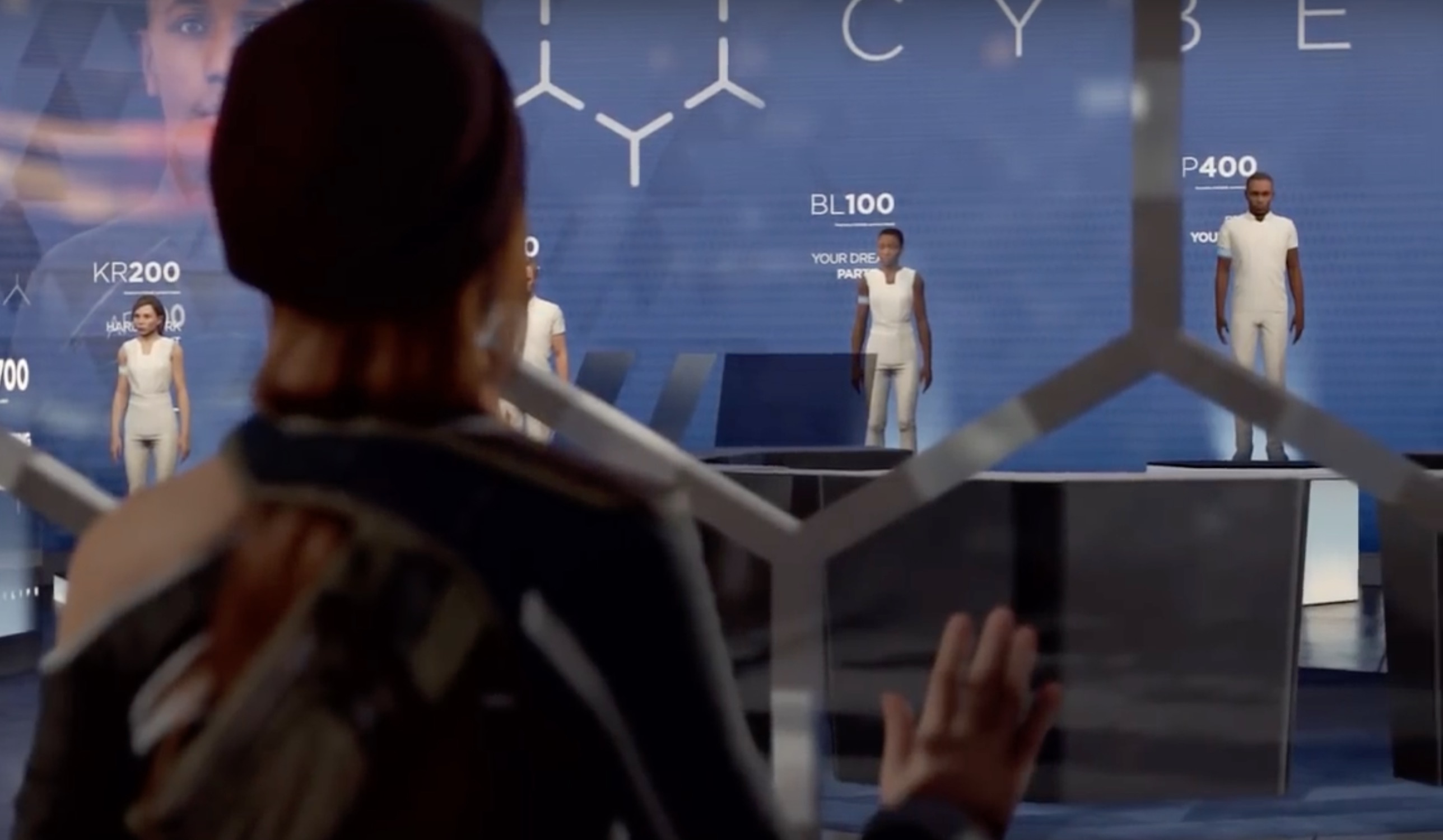David Cage and his team at Quantic Dream began Detroit: Become Human before they even knew they were going to work on it. At GDC 2012, they showed off Kara, a near-eight minute experiment around how to convey emotions in a virtual space. It was on the bleeding edge of PlayStation 3 development at the time, and the demo offered a quick glimpse into the future of Quantic Dream.
Fast forward to the PlayStation 4 era, and Kara has actually become the basis for Detroit: Become Human, originally shown off at Paris Games Week 2015. We were lucky enough to get a behind closed door demo of the game at Sony’s E3 booth.
The game was running, unsurprisingly, on a PlayStation 4 Pro pumping out 4K HDR visuals in this Alpha build.
Detroit is a film noir thriller following three androids as they begin to question their very existence and purpose. Androids in Become Human are lifelike robots though they don’t share visual, vocal, or behavioural features. Some of these robots, perhaps predictably if you’ve ever seen iRobot, begin to understand they they may be more than just objects. Of course, they are in fact just objects, but the story Quantic Dream is telling will have us feel otherwise.
When the story starts, some of these androids have already begun to behave strangely, claim to feel emotion, and distrust their human owners.
Each of the three androids the player will control has a different storyline, and while it is unclear how they will intersect at this point, the developer has a habit of making thrilling stories with incredible interconnected branches. Each decision an android makes will impact a decision in the moment as well as the macro gameplay.
Marcus, played by Jesse Williams, is the demo we were treated to at E3. The mission, Capitol Park, saw the player control Marcus to free a set of fellow androids that were waiting to be sold at a nearby store. If Marcus succeeds in the mission, he will be able to send a message to the humans. That message can be one of pacifism, a plea of equality among humans and machines, or one of violence.
We saw the scene played out in two ways, both out of context to the main game, but with enough information to piece some things together.
Marcus and an accomplice find their way to the store through a series of city streets and back roads. The environment shares many elements with The Division in its run-down, very natural city feel, as well as with Watch Dogs in its hack-anything nature.
As an android, Marcus can hack objects, following buried wires from security cameras to their server, or power cables from a building’s fusebox to the city transformer that powers it. Doing so allows Marcus to control those elements, furthering his mission of freeing the storefront androids.
Along the mission, Marcus must decide the best ways to eliminate a police drone, for example, or whether to cancel the mission on account of a nearby police patrol. The game shows off these choices in very elegant ways, almost with Quantum Break-like time-travel elements in which Marcus can calculate the trajectory of his climbing and jumping to ensure he is able to wrestle the drone to the ground.
Such a feat is in fact a quicktime event, but one in which the player has to do a lot more than just mash or tap a button at the right moment to trigger the correct sequence. Instead, Quantic Dream has implemented what sounds complicated, but in actual fact gave the gameplay a lot more unique substance than expected. In order to trigger a specific sequence, the player must push the correct series of buttons and triggers in the right order (for example, hold R1, then click in L3, and hold X) to pull off the move. It’s difficult to explain, but works fantastically well and pulls the player from the immersion of the game that much less.
There is also an incredible storyline in Detroit: Become Human that is said to be exponentially more branching than Heavy Rain or Beyond: Two Souls before it.
The other demo we managed to get our hands on involved Connor, a police android, who needs to deescalate another android who’s taken a young girl hostage and is threatening to kill them both by jumping off the penthouse of a skyscraper. As Connor exits the elevator, the player takes control of him, allowing him to spend some time inside the suite before exiting to the rooftop and making decisions as to negotiate with the rogue android.
Again, time travel-like sequences occur, allowing the player to piece together just what happened leading up to the hostage-taking. In one area, Connor examines a body laying on the floor and is able to calculate, based on the trajectory of the objects strewn across the area, and the blood spatter on the table, that the blunt force trauma must have come from a fight in a certain direction. Rotating the camera through this sequence in pure Matrix style allows the player to see something else get thrown across the room, leading to a new item to examine, leading to more clues and more information.
The longer Connor takes to get outside to negotiate with the android, the lower his percentage of a successful resolution, something the game does not neglect to tell you in a giant message across the screen. However, the more clues and items Connor discovers and examines, the higher these chances as they all add to the android’s understanding of the situation.
Going outside, the remainder of the mission revolves around a sequence of decisions which either improve the hostile android’s demeanour or worsen it. A series of about six decisions later, after discussing the android’s place in the world, the consequences to his actions, and the potential for a peaceful resolution, the scene ends. Of course, the way the scene ends is entirely up to you.
Of course, with about twenty minutes to witness and play, respectively, each of these sequences, it doesn’t give a lot of context as to the way they fit into the complete story of Detroit. However, the sections we did play, despite being devoid of content, were thrilling and intense, leaving us equally with rushes of excitement and intense exhaustion. That negotiation sequence isn’t for the lighthearted, naturally.
Keep an eye out for our interview with David Cage, the creative brain behind Quantic Dream, and his thoughts on why Detroit was such an important story to tell, and how to do it with the humanity and care that it deserves. Ironically, being a game about robots and sentient machines can be the vessel for an incredible human story in what can feel like an entirely virtual, robotic world.
Detroit: Become Human arrives on PlayStation 4 in 2018.



